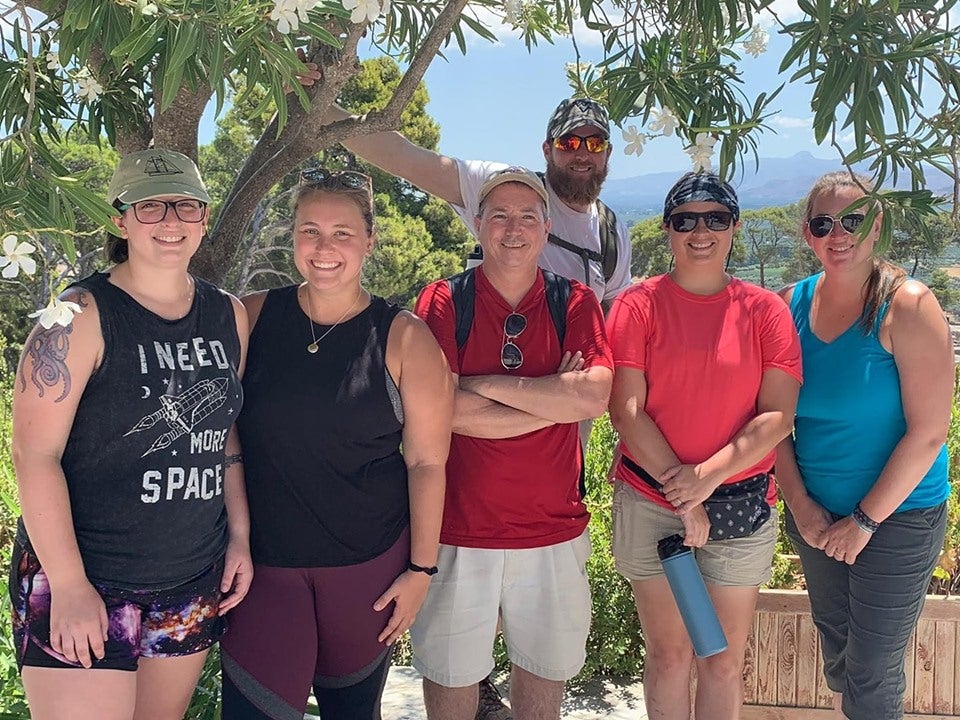GREECE
Maritime Landscapes of Ancient Crete

From left, Jacqui Hewett, Ashley Hunter, Emily Dibiase, Ashton Fisher, David Stewart and Tyler McLellan at Akrotiri, Thera, the “Pompeii of the Aegean,” a Bronze Age town buried by volcanic eruption about 1620 B.C. (Contributed photos)
Dr. David Stewart, associate professor of maritime studies, led the Maritime Landscapes of Ancient Crete trip to Greece with five maritime studies undergraduate and graduate students.
The group started its journey in Athens where students visited the Acropolis and Agora. Ashley Hunter, an undergraduate student on the trip, wrote about her experience in Athens and shared photos in her blog, Maritime Landscapes of Crete.
After four nights in Athens, they visited the island of Santorini, where the group saw the late Bronze Age site at Akrotiri and hiked to the ancient site of Thera, which thrived from the Archaic period through the Roman Empire.
Following their time in Santorini, the maritime studies students went to Heraklion, Crete, and visited the Palace of Knossos along with other Minoan sites. After four nights there, the group took a bus to Agios Nikolaos, located on the eastern part of the island, where they observed the landscape of a Minoan site and analyzed different aspects surrounding the site, such as its geographical and physical elements.
The group then rode to southern Crete and visited the site of Komos and the Palace of Phaistos. Their last stop was to Chania on the western coast of Crete, which was a 14th-century Venetian port.

